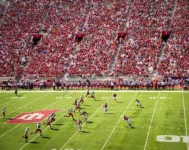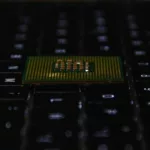We live in a world where we can choose the content we consume. Unlike our parents, who pretty much had to read the news they were sent, we can choose between news sources and alter our perceived reality. Increasingly, generative AI allows us to modify the entertainment content we receive and to share those modifications with others (example here). This trend suggests that activities that are typically live, which then can’t be altered or customized, might suffer with this rise of ultra-customized content.
This week, Cisco Live introduced Cisco Stadium, and I think it may showcase a way to blend technology with live performances, including sports, to better engage an audience that wants a unique and personal sports experience.
Let’s explore that this week.
Cisco Stadium
Cisco Stadium allows a fan in the stadium to use their smart device to make referee calls using instant replay technology collaboratively or individually. The instant replay capability alone would be helpful because there are a lot of distractions in a stadium. Plus, people tend to stand up during major plays and may block your view of the action. I’ve often found I can follow the game better from home due to strategic camera placement. But in a stadium, you get the crowd’s excitement, and it feels more like you are part of something, even when you can’t see what it is you are part of.
By allowing attendees to get instant replays and engage in them, it helps bridge what they would have been able to do from home with the experience of being at the game. This has the potential to provide the best of both worlds and create a stronger reason to attend games in person. Players can be adversely impacted by low attendance as the crowd’s energy, or lack thereof, can impact the team’s performance.
Evolving Cisco Stadium
But as we look at generative AI capabilities and take this hybrid approach to in-person game attendance and in-person event attendance (plays and concerts), there are options to do even more in terms of providing for a richer audience experience.
For instance, generative AI can create simulations in which you can see what would have happened in a play if other players had been on the court or field. You could also virtually mess with weather and wind conditions to see if they would have favored or hurt your favorite player or team, and you could even place the image of yourself (or someone else) in the action and share that with your friends on social media.
Stadium management could even share some of the more interesting or funny generative AI clips with the rest of the audience either on their devices or on the jumbotron, though care would need to be taken not to use an image without permission. (For instance, someone putting the face of their ex on a boxer or MMA fighter who is losing likely wouldn’t end well, though it might work with a political figure as a statement).
Imagine watching NASCAR but being able to switch the cars out with cars from Speed Racer or being able to swap out the baseball players in a no-hitter (which otherwise is boring) with your favorite cartoon characters and have the AI generate virtual on-field jokes and action. Or just change the voice of the announcer to Betty Boop or John Wayne to make the dull parts of a game more entertaining.
Wrapping up: Cisco Stadium is just the start
While Cisco Stadium is limited right now, the concept of using technology to create better fan engagement for in-person events is a good one. With the advent of generative AI, we will gain even more capabilities to customize live events for our own interest by putting ourselves into the action, making our own calls, and even, through simulation, seeing how the outcome of a game could be changed.
Our imaginations may be the only limitations to how we can rearchitect what we see and hear at live events. Tools like Apple’s new Vision Pro Goggles and Cisco Stadium will be instrumental in our ability to recraft how we see the reality around us.








